Week12 Joyce Carol Oates’"Where Are You Going, Where Have You Been?"
1. "Where Are You Going, Where Have You Been?"

"Where Are You Going, Where Have You Been?" is a frequently anthologized short story written by Joyce Carol Oates. The story first appeared in the Fall 1966 edition of Epoch Magazine. It was inspired by four Tucson, Arizona murders committed by Charles Schmid, which were profiled in Life magazine in an article written by Don Moser on March 4, 1966. Oates said that she dedicated the story to Bob Dylan because she was inspired to write it after listening to his song "It's All Over Now, Baby Blue."
Plot
The story was originally named "Death and the Maiden". The main character of Oates' story is Connie, a beautiful, self-absorbed 15-year-old girl, who is at odds with her mother—once a beauty herself–and with her dutiful, "steady", and homely older sister. Without her parents' knowledge, she spends most of her evenings picking up boys at a Big Boy restaurant, and one evening captures the attention of a stranger in a gold convertible covered with cryptic writing. While her parents are away at her aunt's barbecue, two men pull up in front of Connie's house and call her out. She recognizes the driver, Arnold Friend, as the man from the drive-in restaurant, and is initially charmed by the smooth-talking, charismatic stranger. He tells Connie he is 18 and has come to take her for a ride in his car with his sidekick Ellie. Connie slowly realizes that he is actually much older,and grows afraid. When she refuses to go with them, Friend becomes more forceful and threatening, saying that he will harm her family, while at the same time appealing to her vanity, saying that she is too good for them. Connie is compelled to leave with him and do what he demands of her.
Critical review
Considerable academic analysis has been written about the story, with scholars divided on whether it is intended to be taken literally or as allegory. Several writers focus on the series of numbers written on Friend's car, which he indicates are a code of some sort, but which is never explained:
"'Now, these numbers are a secret code, honey,' Arnold Friend explained. He read off the numbers 33, 19, 17 and raised his eyebrows at her to see what she thought of that, but she didn't think much of it." (p. 41)
Literary scholars have interpreted this series of numbers as different Biblical references, as an underlining of Friend's sexual deviancy, or as a reference to the ages of Friend and his victims.
The narrative has also been viewed as an allegory for initiation into sexual adulthood, an encounter with the devil, a critique of modern youth's obsession with sexual themes in popular music,or as a dream sequence.
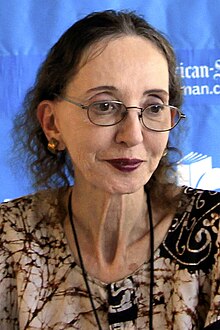 Joyce Carol Oates (born June 16, 1938) is an American writer. Oates published her first book in 1963 and has since published over 40 novels, as well as a number of plays and novellas, and many volumes of short stories, poetry, and nonfiction. She has won many awards for her writing, including the National Book Award,for her novel them (1969), two O. Henry Awards, and the National Humanities Medal. Her novels Black Water (1992), What I Lived For (1994), Blonde (2000), and short story collections The Wheel of Love (1970) and Lovely, Dark, Deep: Stories (2014) were each finalists for the Pulitzer Prize.
Joyce Carol Oates (born June 16, 1938) is an American writer. Oates published her first book in 1963 and has since published over 40 novels, as well as a number of plays and novellas, and many volumes of short stories, poetry, and nonfiction. She has won many awards for her writing, including the National Book Award,for her novel them (1969), two O. Henry Awards, and the National Humanities Medal. Her novels Black Water (1992), What I Lived For (1994), Blonde (2000), and short story collections The Wheel of Love (1970) and Lovely, Dark, Deep: Stories (2014) were each finalists for the Pulitzer Prize."It's All Over Now, Baby Blue" is a song written and performed by Bob Dylan and featured on his Bringing It All Back Home album, released on March 22, 1965 by Columbia Records (see 1965 in music). The song was recorded on January 15, 1965 with Dylan's acoustic guitar and harmonica and William E. Lee's bass guitar the only instrumentation. The lyrics were heavily influenced by Symbolist poetry and bid farewell to the titular "Baby Blue." There has been much speculation about the real life identity of "Baby Blue", with suspects including Joan Baez, David Blue, Paul Clayton, Dylan's folk music audience, and even Dylan himself.
Bob Dylan ( born Robert Allen Zimmerman; May 24, 1941) is an American songwriter, singer, painter, and writer. He has been influential in popular music and culture for more than five decades. Much of his most celebrated work dates from the 1960s, when his songs chronicled social unrest. Early songs such as "Blowin' in the Wind" and "The Times They Are a-Changin'" became anthems for the Civil Rights Movement and anti-war movement. Leaving behind his initial base in the American folk music revival, his six-minute single "Like a Rolling Stone", recorded in 1965, enlarged the range of popular music.
2.The Giver
The Giver won the 1994 Newbery Medal and has sold more than 10 million copies worldwide as of 2014.In Australia, Canada, and the United States, it is on many middle school reading lists, but it is also frequently challenged and it ranked number 11 on the American Library Association list of the most challenged books of the 1990s. A 2012 survey based in the U.S. designated it the fourth-best children's novel of all time.
Lois Lowry (born Lois Ann Hammersberg; March 20, 1937) is an American writer credited with more than thirty children's books. She has won two Newbery Medals, for Number the Stars in 1990 and The Giver in 1994. For her contribution as a children's writer, she was a finalist in 2000 and U.S. nominee again in 2004, as well as a finalist in 2016 for the biennial, international Hans Christian Andersen Award, the highest recognition available to creators of children's books. Her book Gooney Bird Greene won the 2002 Rhode Island Children's Book Award. In 2007 she received the Margaret Edwards Award from the American Library Association for her contribution in writing for teens.In 2011 she gave the May Hill Arbuthnot Lecture; her lecture was titled "UNLEAVING: The Staying Power of Gold". She was also awarded an honorary Doctorate of Letters by Brown University in 2014.
As an author, Lowry is known for writing about difficult subject matters within her works for children. She has explored such complex issues as racism, terminal illness, murder, and the Holocaust among other challenging topics. She has also explored very controversial issues of questioning authority such as in The Giver quartet. Her writing on such matters has brought her both praise and criticism. In particular, her work The Giver, the first novel in The Giver quartet, has been met with a diversity of reactions from schools in America, some of which have adopted it as a part of the mandatory curriculum, while others have prohibited the book's inclusion in classroom studies. A film adaptation of The Giver was released in 2014.
3. The Hunger Games
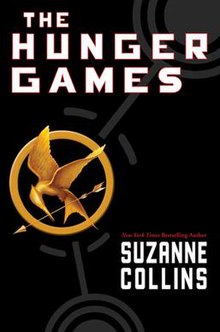
The Hunger Games is a 2008 dystopian novel by the American writer Suzanne Collins. It is written in the voice of 16-year-old Katniss Everdeen, who lives in the future, post-apocalyptic nation of Panem in North America. The Capitol, a highly advanced metropolis, exercises political control over the rest of the nation. The Hunger Games is an annual event in which one boy and one girl aged 12–18 from each of the twelve districts surrounding the Capitol are selected by lottery to compete in a televised battle to the death.
The book received mostly positive responses from major reviewers and authors. It was praised for its plot and character development. In writing The Hunger Games, Collins drew upon Greek mythology, Roman gladiatorial games, and contemporary reality television for thematic content. The novel won many awards, including the California Young Reader Medal, and was named one of Publishers Weekly's "Best Books of the Year" in 2008.
Background
Collins has said that the inspiration for The Hunger Games came from channel surfing on television. On one channel she observed people competing on a reality show and on another she saw footage of the invasion of Iraq. The two "began to blur in this very unsettling way" and the idea for the book was formed. The Greek myth of Theseus served as a major basis for the story, with Collins describing Katniss as a futuristic Theseus, and Roman gladiatorial games provided the framework. The sense of loss that Collins developed through her father's service in the Vietnam War was also an influence on the story, with Katniss having lost her father at age 11, five years before the story begins. Collins stated that the deaths of young characters and other "dark passages" were the most difficult parts of the book to write, but that she had accepted that passages such as these were necessary to the story. She considered the moments where Katniss reflects on happier moments in her past to be more enjoyable
Suzanne Collins began her professional career writing for children’s television. She worked on the staffs of several Nickelodeon shows, including the Emmy-nominated hit Clarissa Explains it All and The Mystery Files of Shelby Woo. For preschool viewers, she penned multiple stories for the Emmy-nominated Little Bear and Oswald. She also co-wrote the Rankin/Bass Christmas special, Santa, Baby! with her friend, Peter Bakalian, which was nominated for a WGA Award in Animation. Most recently she was the Head Writer for Scholastic Entertainment’s Clifford’s Puppy Days,and a freelancer on Wow! Wow! Wubbzy! While working on a Kids WB show called Generation O! she met children’s author and illustrator James Proimos, who talked her into giving children’s books a try.
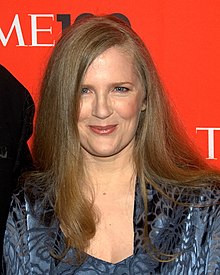 Her next series, The Hunger Games Trilogy, is an international bestseller. The Hunger Games has spent over six years to date on The New York Times bestseller list since publication in September 2008, and has also appeared consistently on USA Today and Publishers Weekly bestseller lists. It has been sold into 56 territories in 51 languages. In 2010 Collins was named to the TIME 100 list as well as the Entertainment Weekly Entertainers of the Year list.
Her next series, The Hunger Games Trilogy, is an international bestseller. The Hunger Games has spent over six years to date on The New York Times bestseller list since publication in September 2008, and has also appeared consistently on USA Today and Publishers Weekly bestseller lists. It has been sold into 56 territories in 51 languages. In 2010 Collins was named to the TIME 100 list as well as the Entertainment Weekly Entertainers of the Year list.In September 2013, Suzanne released a critically acclaimed autobiographical picture book, YEAR OF THE JUNGLE, illustrated by James Proimos. It deals with the year she was six and her father was deployed to Viet Nam. It has been sold into 12 territories in 11 languages. Her first picture book, WHEN CHARLIE MCBUTTON LOST POWER, about a boy obsessed with computer games, was illustrated by Mike Lester and came out in 2005. It has been sold into 4 foreign territories.
4.Divergent

Divergent is the debut novel of American novelist Veronica Roth, published by HarperCollins Children's Books in 2011. The novel is the first of the Divergent trilogy, a series of young adult dystopian novels set in the Divergent Universe. The novel Divergent features a post-apocalyptic version of Chicago and follows Beatrice "Tris" Prior as she explores her identity within a society that defines its citizens by their social and personality-related affiliation with five factions, which removes the threat of anyone exercising independent will and re-threatening the population's safety. Underlying the action and dystopian focused main plot is a romantic subplot between Tris and one of her instructors in the Dauntless faction, nicknamed Four.
The novel has been compared to other young adult books such as The Hunger Games and The Maze Runner because of its similar themes and target audience. In particular, the novel explores the themes common to young adult fiction, such as adult authority and the transition from childhood to maturity, as well as such broader motifs as the place of violence and social structures within a post-apocalyptic society. Its major plot device, the division of society into personality types, is one used in other science fiction works. Beyond its literary context, Roth's open declaration of her religion as a Christian has brought commentary from Christian communities both endorsing and challenging the novel.
 Veronica Roth (born August 19, 1988) is an American novelist and short story writer known for her debut New York Times bestselling Divergent trilogy, consisting of Divergent, Insurgent, and Allegiant; and Four: A Divergent Collection. Divergent was the recipient of the Goodreads Favorite Book of 2011 and the 2012 winner for Best Young Adult Fantasy & Science Fiction
Veronica Roth (born August 19, 1988) is an American novelist and short story writer known for her debut New York Times bestselling Divergent trilogy, consisting of Divergent, Insurgent, and Allegiant; and Four: A Divergent Collection. Divergent was the recipient of the Goodreads Favorite Book of 2011 and the 2012 winner for Best Young Adult Fantasy & Science FictionVeronica Roth was born on August 19, 1988 in New York City, and was raised primarily in Barrington, Illinois. Her mother, Barbara Ross, is a painter who resides in Barrington. She is the youngest of three children. Her parents divorced when she was five years old, and her mother has since remarried to Frank Ross, a financial consultant for landscaping companies. Her brother and sister live in the Chicago area.
She is of German and Polish descent.Roth says of her father: “He had a job, and worked far away. Now I have a good relationship with my stepdad.” Her maternal grandparents were concentration camp survivors, whose religious convictions pushed her mother away from religion. Veronica Roth learned about Christianity by attending a Christian Bible study during her high school years, and has stayed with it.
Roth graduated from Barrington High School. After attending a year of college at Carleton College, she transferred to Northwestern University for its creative writing program. She married photographer Nelson Fitch in 2011. They reside in the Chicago area.
5.To Kill a Mockingbird

To Kill a Mockingbird is a novel by Harper Lee published in 1960. It was immediately successful, winning the Pulitzer Prize, and has become a classic of modern American literature. The plot and characters are loosely based on Lee's observations of her family, her neighbors and an event that occurred near her hometown of Monroeville, Alabama, in 1936, when she was 10 years old.
The novel is renowned for its warmth and humor, despite dealing with the serious issues of rape and racial inequality. The narrator's father, Atticus Finch, has served as a moral hero for many readers and as a model of integrity for lawyers. One critic explains the novel's impact by writing, "In the twentieth century, To Kill a Mockingbird is probably the most widely read book dealing with race in America, and its protagonist, Atticus Finch, the most enduring fictional image of racial heroism."
As a Southern Gothic novel and a Bildungsroman, the primary themes of To Kill a Mockingbird involve racial injustice and the destruction of innocence. Scholars have noted that Lee also addresses issues of class, courage, compassion, and gender roles in the American Deep South. The book is widely taught in schools in the United States with lessons that emphasize tolerance and decry prejudice. Despite its themes, To Kill a Mockingbird has been subject to campaigns for removal from public classrooms, often challenged for its use of racial epithets.
Reaction to the novel varied widely upon publication. Despite the number of copies sold and its widespread use in education, literary analysis of it is sparse. Author Mary McDonough Murphy, who collected individual impressions of To Kill a Mockingbird by several authors and public figures, calls the book "an astonishing phenomenon".In 2006, British librarians ranked the book ahead of the Bible as one "every adult should read before they die".It was adapted into an Oscar-winning film in 1962 by director Robert Mulligan, with a screenplay by Horton Foote. Since 1990, a play based on the novel has been performed annually in Harper Lee's hometown.
 Nelle Harper Lee (April 28, 1926 – February 19, 2016), better known by her pen name Harper Lee, was an American novelist widely known for To Kill a Mockingbird, published in 1960. Immediately successful, it won the 1961 Pulitzer Prize and has become a classic of modern American literature. Though Lee had only published this single book, in 2007 she was awarded the Presidential Medal of Freedom for her contribution to literature. Additionally, Lee received numerous honorary degrees, though she declined to speak on those occasions. She was also known for assisting her close friend Truman Capote in his research for the book In Cold Blood (1966).Capote was the basis for the character Dill in To Kill a Mockingbird.
Nelle Harper Lee (April 28, 1926 – February 19, 2016), better known by her pen name Harper Lee, was an American novelist widely known for To Kill a Mockingbird, published in 1960. Immediately successful, it won the 1961 Pulitzer Prize and has become a classic of modern American literature. Though Lee had only published this single book, in 2007 she was awarded the Presidential Medal of Freedom for her contribution to literature. Additionally, Lee received numerous honorary degrees, though she declined to speak on those occasions. She was also known for assisting her close friend Truman Capote in his research for the book In Cold Blood (1966).Capote was the basis for the character Dill in To Kill a Mockingbird.The plot and characters of To Kill a Mockingbird are loosely based on Lee's observations of her family and neighbors, as well as an event that occurred near her hometown in 1936, when she was 10 years old. The novel deals with the irrationality of adult attitudes towards race and class in the Deep South of the 1930s, as depicted through the eyes of two children. The novel was inspired by racist attitudes in her hometown of Monroeville, Alabama.
6.1984
Nineteen Eighty-Four, often published as 1984, is a dystopian novel published in 1949 by English author George Orwell.The novel is set in Airstrip One (formerly known as Great Britain), a province of the superstate Oceania in a world of perpetual war, omnipresent government surveillance, and public manipulation. The superstate and its residents are dictated to by a political regime euphemistically named English Socialism, shortened to "Ingsoc" in Newspeak, the government's invented language. The superstate is under the control of the privileged elite of the Inner Party, a party and government that persecutes individualism and independent thinking as "thoughtcrime", which is enforced by the "Thought Police".
The tyranny is ostensibly overseen by Big Brother, the Party leader who enjoys an intense cult of personality, but who may not even exist. The Party "seeks power entirely for its own sake. It is not interested in the good of others; it is interested solely in power."The protagonist of the novel, Winston Smith, is a member of the Outer Party, who works for the Ministry of Truth (or Minitrue in Newspeak), which is responsible for propaganda and historical revisionism. His job is to rewrite past newspaper articles, so that the historical record always supports the party line. The instructions that the workers receive portray the corrections as fixing misquotations and never as what they really are: forgeries and falsifications. A large part of the Ministry also actively destroys all documents that have not been edited and do not contain the revisions; in this way, no proof exists that the government is lying. Smith is a diligent and skillful worker but secretly hates the Party and dreams of rebellion against Big Brother. The heroine of the novel, Julia, is based on Orwell's second wife, Sonia Orwell.
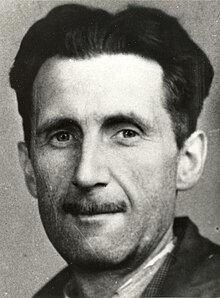 Eric Arthur Blair (25 June 1903 – 21 January 1950), better known by his pen name George Orwell, was an English novelist, essayist, journalist, and critic. His work is marked by lucid prose, awareness of social injustice, opposition to totalitarianism, and outspoken support of democratic socialism.
Eric Arthur Blair (25 June 1903 – 21 January 1950), better known by his pen name George Orwell, was an English novelist, essayist, journalist, and critic. His work is marked by lucid prose, awareness of social injustice, opposition to totalitarianism, and outspoken support of democratic socialism.Orwell wrote literary criticism, poetry, fiction, and polemical journalism. He is best known for the allegorical novella Animal Farm (1945) and the dystopian novel Nineteen Eighty-Four (1949). His non-fiction works, including The Road to Wigan Pier (1937), documenting his experience of working class life in the north of England, and Homage to Catalonia (1938), an account of his experiences in the Spanish Civil War, are widely acclaimed, as are his essays on politics, literature, language, and culture. In 2008, The Times ranked him second on a list of "The 50 greatest British writers since 1945"
7.Brave New World

Brave New World is a novel written in 1931 by Aldous Huxley, and published in 1932. Set in London in the year AD 2540 (632 A.F.—"After Ford"—in the book), the novel anticipates developments in reproductive technology, sleep-learning, psychological manipulation, and classical conditioning that are combined to profoundly change society. Huxley answered this book with a reassessment in an essay, Brave New World Revisited (1958), and with Island (1962), his final novel.
In 1999, the Modern Library ranked Brave New World fifth on its list of the 100 best English-language novels of the 20th century. In 2003, Robert McCrum writing for The Observer included Brave New World chronologically at number 53 in "the top 100 greatest novels of all time", and the novel was listed at number 87 on the BBC's survey The Big Read.
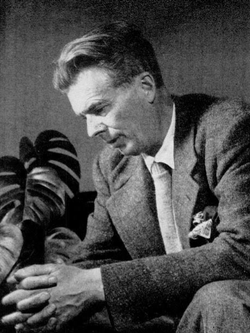 Aldous Leonard Huxley ( 26 July 1894 – 22 November 1963) was an English writer, novelist, philosopher, and prominent member of the Huxley family. He graduated from Balliol College at the University of Oxford with a first-class honours in English literature.
Aldous Leonard Huxley ( 26 July 1894 – 22 November 1963) was an English writer, novelist, philosopher, and prominent member of the Huxley family. He graduated from Balliol College at the University of Oxford with a first-class honours in English literature.He was best known for his novels including Brave New World, set in a dystopian future; for non-fiction books, such as The Doors of Perception, which recalls experiences when taking a psychedelic drug; and a wide-ranging output of essays. Early in his career Huxley edited the magazine Oxford Poetry and published short stories and poetry. Mid career and later, he published travel writing, film stories, and scripts. He spent the later part of his life in the U.S., living in Los Angeles from 1937 until his death. In 1962, a year before his death, he was elected Companion of Literature by the Royal Society of Literature.
Huxley was a humanist, pacifist, and satirist. He later became interested in spiritual subjects such as parapsychology and philosophical mysticism, in particular universalism. By the end of his life, Huxley was widely acknowledged as one of the pre-eminent intellectuals of his time. He was nominated for the Nobel Prize in Literature in seven different years.
8. A dystopia (from the Greek δυσ- and τόπος, alternatively, cacotopia, kakotopia, or simply anti-utopia) is a community or society that is undesirable or frightening. It is translated as "not-good place", an antonym of utopia, a term that was coined by Sir Thomas More and figures as the title of his best known work, Utopia (the blueprint for an ideal society with minimal crime, violence and poverty).
Dystopian societies appear in many artistic works, particularly in stories set in the future. Some of the most famous examples are George Orwell's 1984 and Aldous Huxley's Brave New World. Dystopias are often characterized by dehumanization, totalitarian governments, environmental disaster,or other characteristics associated with a cataclysmic decline in society. Dystopian societies appear in many sub-genres of fiction and are often used to draw attention to real-world issues regarding society, environment, politics, economics, religion, psychology, ethics, science, or technology. However, some authors also use the term to refer to actually-existing societies, many of which are or have been totalitarian states, or societies in an advanced state of collapse and disintegration.

Utopian ideals often place emphasis on egalitarian principles of equality in economics, government and justice, though by no means exclusively, with the method and structure of proposed implementation varying based on ideology. According to Lyman Tower Sargent "There are socialist, capitalist, monarchical, democratic, anarchist, ecological, feminist, patriarchal, egalitarian, hierarchical, racist, left-wing, right-wing, reformist, free love, nuclear family, extended family, gay, lesbian, and many more utopias."
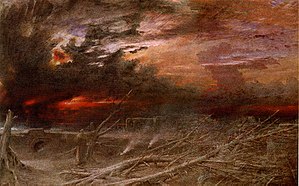 Apocalyptic and post-apocalyptic fiction is a subgenre of science fiction, science fantasy or horror fiction literature in which the Earth's technological civilization is collapsing or has collapsed. The apocalypse event may be climatic, such as runaway climate change; natural, such as an impact event; man-made, such as nuclear warfare; medical, such as a plague or virus, whether natural or man-made; or imaginative, such as zombie apocalypse or alien invasion. The story may involve attempts to prevent an apocalypse event, deal with the impact and consequences of the event itself, or it may be post-apocalyptic, set after the event. The time frame may be immediately after the catastrophe, focusing on the travails or psychology of survivors, the way to maintain the human race alive and together as one, or considerably later, often including the theme that the existence of pre-catastrophe civilization has been forgotten (or mythologized). Post-apocalyptic stories often take place in a non-technological future world, or a world where only scattered elements of society and technology remain.
Apocalyptic and post-apocalyptic fiction is a subgenre of science fiction, science fantasy or horror fiction literature in which the Earth's technological civilization is collapsing or has collapsed. The apocalypse event may be climatic, such as runaway climate change; natural, such as an impact event; man-made, such as nuclear warfare; medical, such as a plague or virus, whether natural or man-made; or imaginative, such as zombie apocalypse or alien invasion. The story may involve attempts to prevent an apocalypse event, deal with the impact and consequences of the event itself, or it may be post-apocalyptic, set after the event. The time frame may be immediately after the catastrophe, focusing on the travails or psychology of survivors, the way to maintain the human race alive and together as one, or considerably later, often including the theme that the existence of pre-catastrophe civilization has been forgotten (or mythologized). Post-apocalyptic stories often take place in a non-technological future world, or a world where only scattered elements of society and technology remain.9. Allusion
An allusion is "a passing or casual reference; an incidental mention of something, either directly or by implication." It is a common practice in literature to make allusions to a variety of sources. The following lists describe some common allusions to Greek or Roman mythology, the Bible, other works of literature, and history. These resources will help you determine why a character is described as having an "Achilles heel," the "patience of Job," or an "Oedipus complex." But hopefully not all three!
They are three allusion---
Biblical Allusions
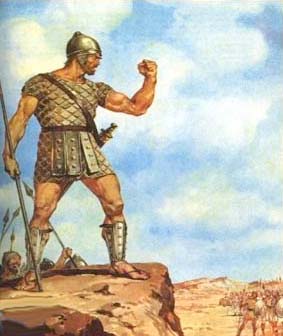
Goliath: Goliath was a giant warrior—more than nine feet tall—who was slain by David in I Samuel. In modern usage, both giants and very large or powerful people or things are called goliaths. Small bookstores can't compete against national chain goliaths.
More Information click the reference:https://www.infoplease.com/arts-entertainment/allusions/biblical-allusions
Literary Allusions
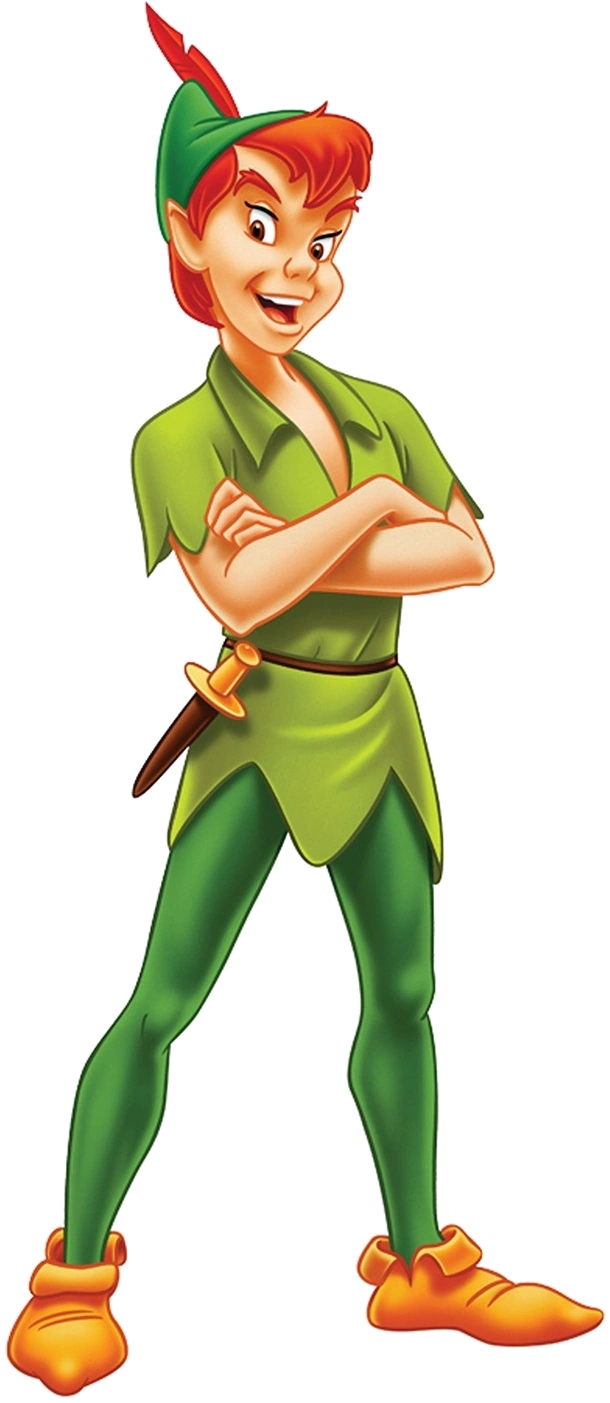
Peter Pan: Peter Pan, the protagonist of a 1904 play and 1911 book by J. M. Barrie, is famously a boy who refused to ever grow up. These days, an adult who acts immaturely is sometimes said to be suffering from “Peter Pan syndrome.” Let him fix his own cocoa; you don't need to indulge his Peter Pan syndrome by mothering him.
More Information click the reference:https://www.infoplease.com/arts-entertainment/allusions/literary-allusions
Mythological Allusions

Achilles heel: In Greek mythology, the warrior Achilles was made invulnerable as a baby by being dipped into the River Styx. Only his heel—the place he was held by when being dipped—was left unprotected, which led to his downfall when it was struck by an arrow. An Achilles heel refers to a person's vulnerability or fatal flaw. He was a shrewd business man and investor, but his Achilles heel was gambling.
More Information click the reference: https://www.infoplease.com/arts-entertainment/allusions/mythological-allusions
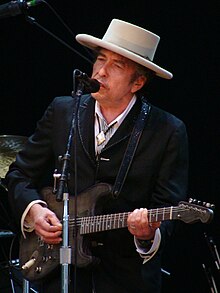
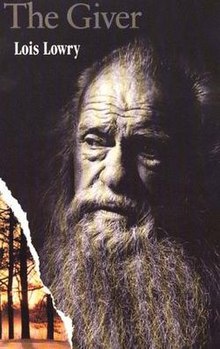

0 個意見:
張貼留言
訂閱 張貼留言 [Atom]
<< 首頁